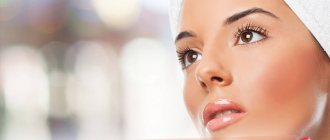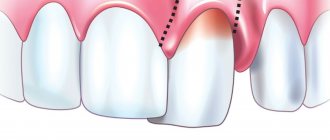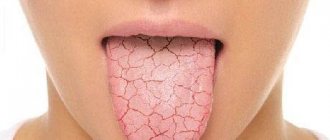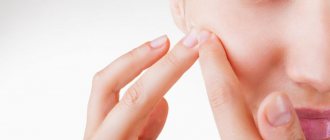27.04.2021
You can make an appointment with a specialist using the form or call the phone number Moscow, Kashirskoye Shosse, 24, building 8
MAKE AN APPOINTMENT
Ask a Question
Black spots on the skin (comedones) are the openings of follicles clogged with sebum. They usually cause trouble for teenagers, but adults also have this problem. How is facial cleansing done to remove blackheads? Can you do it at home or do you have to see a cosmetologist?
The reasons for the formation of blackheads are poor nutrition and skin cleansing, poor-quality cosmetics, and bad habits. Hormonal imbalances and diseases of the digestive tract lead to their occurrence. By changing your habits, diet, and skin care, you should not give up proven quick ways to cleanse your face of blackheads. By dealing with the problem comprehensively, you can achieve good results - improve the quality of your skin and achieve a healthy lifestyle.
Is it worth squeezing out blackheads on the face: dangerous cleaning
Many people try to solve the problem simply and quickly. They squeeze out blackheads without cleansing the skin or ensuring a sterile procedure. There is no need to do this, since such actions often:
· scars remain;
Pores expand and become noticeable;
· inflammation occurs on the face after cleaning blackheads due to non-compliance with hygiene rules.
As a result, it can be more difficult for a cosmetologist to cope with the consequences of improperly dealing with blackheads than with acne. Hygienic facial cleansing and removal of blackheads should be carried out in a sterile clinic environment. This ensures safety and gives the desired result.
Vidal loop263
The tool was created by the French bacteriologist Fernand Vidal. It is a metal stick with a thin loop at one end. On the other hand, it can be equipped with a needle or Uno spoon.
Indications and contraindications
The Vidal loop is used to remove blackheads and blackheads with white heads. The cosmetic tool can be used to treat different problem areas, but most often it is used to clean the skin in the T-zone.
How to properly remove pimples using a tool?
The technology for using the Vidal loop is practically no different from the principle of using the Uno spoon. The tool must be positioned so that the acne element is in the center of the loop. To remove the contents, you need to apply a little pressure on the tool. The Vidal loop is especially used to remove dense blackheads that give the skin a rough appearance. The tool is practically powerless against flat elements.
A Vidal needle is always included in the acne tool kit, which is used to remove deep subcutaneous acne. The advantage of the tool is its targeted action, but when using it you need to be careful (there is a risk of injury to the skin and the spread of infection). A Vidal needle is usually combined with a loop during cleaning.
Treatment of comedones with ultrasound
Less painful, in comparison with mechanical manual cleaning, is a procedure during which the skin is exposed to ultrasonic waves. As a result, the face is cleared of acne, the pores are freed from excess sebum, and dead epidermal cells are exfoliated. If before the session there were black spots on the skin, then after completing facial cleansing, the skin is absolutely smooth, even, and fresh.
Medical offers a wide range of cosmetology and medical services. Appointments can be made by phone or on the clinic’s website.
Kozlova Lyudmila Sergeevna The article was checked and confirmed by a doctor
Back
Ask a Question
Why do acne vulgaris form?
In the pores of the skin there are hair follicles, into the lumen of which the ducts of the sebaceous glands open. Thus, the secretion synthesized by the sebaceous glands (sebum) is first poured into the lumen of the hair follicle, and then excreted onto the surface of the skin. The physiological significance of the secretion of the sebaceous glands is to moisturize the skin (by reducing the evaporation of moisture from its surface), as well as improving its barrier properties. The reasons for the formation of acne vulgaris on the face are as follows:
1) Hyperactivity of the sebaceous glands –
The activity of the sebaceous glands is controlled by hormones. The greatest activity of the sebaceous glands is observed in the puberty period (puberty) - this is the time period from 12 to 16 years in girls, and from 13 to 17-18 years in boys. This occurs due to an increase in the level of androgens in the blood - primarily testosterone. The latter can be of either testicular (in boys) or ovarian origin (in girls). Thus, the first reason may be due to high concentrations of androgens.
But the concentration of androgens can be increased not only in adolescents, but also in adults (absolute hyperandrogenism). In addition, in women, the activity of the sebaceous glands is also associated with the cycle; for example, it always increases after ovulation, which is associated with an increase in the concentration of luteinizing hormone. Therefore, in the period from 2 to 7 days after ovulation, acne may appear or worsen in women. But still, in most people with acne (blackheads and pimples), an increase in the concentration of androgens is not laboratory confirmed, but there is hyperactivity of the sebaceous glands.
The latter has its reason. The fact is that a number of patients may experience an increase in the sensitivity of receptors located in the sebaceous glands to androgens. In turn, this leads to increased production of sebaceous gland secretions (even with normal concentrations of androgens in the blood). Increased receptor sensitivity is provided by enzymes such as 17-β GSD, 3-β GSD, and 5 α-reductase. The first 2 enzymes convert dehydroepiandrosterone and androstenedione into testosterone, and then 5 α-reductase converts free testosterone into dihydrotestosterone.
Thus, due to the increased activity of enzymes, the concentration of dihydrotestosterone increases (even with normal levels of androgens in the blood). Dihydrotestosterone is a direct hormonal stimulator of the synthesis of sebaceous gland secretions (sebum). In patients with acne and pimples, the biosynthesis of dihydrotestosterone in the sebaceous glands is increased from 2 to 30 times compared to patients with healthy skin. Moreover, in men this process occurs much more intensely (24stoma.ru).
Important: overactivity of the sebaceous glands has another important consequence. The fact is that an increase in secretion leads to a change in the qualitative composition of sebum, namely to a decrease in the content of linoleic acid in it. We will explain below what this affects.
2) Follicular hyperkeratosis –
We have already said that the skin pore is the lumen of the hair follicle (the so-called “follicular canal”). The peculiarity of the latter is not only that the duct of the sebaceous gland opens into it and sebum is separated. The walls of the follicular canal are covered with a thin layer of follicular keratinocytes (corneocytes). Renewal of cell layers occurs with desquamation of the latter, i.e. they are exfoliated and enter the lumen of the hair follicle, and then, together with sebum, are carried to the surface of the skin.
There is such a thing as follicular hyperkeratosis. This process consists of increasing the proliferation (reproduction) of the deep layers of keratinocytes, and slowing down their desquamation (desquamation) into the lumen of the hair follicle. First of all, this occurs due to androgenic stimulation, as well as the low content of linoleic acid in sebum. In addition, follicular hyperkeratosis is also caused by the release of an inflammatory mediator called IL-1 (interleukin-1) by follicle keratinocytes. This inflammatory mediator is released by keratinocytes, also in response to overproduction of sebum by the sebaceous glands.
And now we come to the point that it is “increased amount of sebum + follicular hyperkeratosis” that are the main processes that lead to obstruction of hair follicles in the pores of the skin (i.e. to the formation of “sebum plugs” in their lumen - open and closed comedones).
White and blackheads: photos
3) Epidermal hyperkeratosis –
But hyperproliferation of keratinocytes and disruption of their desquamation can occur not only in hair follicles, but also in the epidermal layer of the skin. Epidermal keratinocytes, for example, also have androgen receptors, as do hair follicle keratinocytes. An increased concentration of androgens, or increased sensitivity of receptors to androgens, leads to hyperproliferation of keratinocytes, as well as increased synthesis of keratin, as well as glycosaminoglycans, which are one of the main components of the bonding cement between keratinocytes.
As a result of cement strengthening, the separation of keratinocytes in the stratum corneum (corneocytes) is disrupted, which leads to a decrease in their exfoliation and an increase in the thickness of the stratum corneum. The latter can block the mouths of the hair follicles, making it difficult for them to eject the secretion of the sebaceous glands (sebum) onto the surface of the skin, which contributes to the formation of sebaceous plugs. But epidermal hyperkeratosis can also be associated with excessive exposure to solar radiation, which also leads to an increase in the thickness of the stratum corneum. There is even such a term as “sun acne” (Favre-Rakucho disease).
Acne on the face: predisposing factors
In addition to the main factors for the appearance of acne, there are also secondary ones that predispose to their appearance. We have listed the main ones below:
- Comedogenic cosmetics – cosmetics can cause acne if they are oil-based and can clog pores. Examples of comedogenic components are various natural oils, as well as various emollients derived from petroleum (for example, isopropyl myristate and its analogues). It is advisable to choose cosmetics that have been tested for comedogenicity, which will be marked as “non-comedogenic”.
- Birth control pills and hormonal changes - we already wrote above that the appearance and intensification of acne in women (in the period from 2 to 7 days after ovulation) can be associated with the cycle. Additionally, birth control pills can also stimulate acne, but only if they contain only pure progesterone.
- Medicines – the appearance of acne on the face can be stimulated by anticonvulsants, bromides, lithium, iodides, isoniazid, corticotropin, prednisolone or its analogues, as well as steroid hormones. In addition, according to the world's most famous textbook on dermatology, Fitzpatrick's Dermatology, such a reaction is possible to the use of a complex of B vitamins, and in addition to the so-called “halogenated compounds” (the latter are widely used in the production of drugs and dyes).
- Increased sweating – if due to physiology, or due to increased physical activity or work conditions, you often sweat, this can aggravate your acne.
Important: the influence of many other factors is discussed in the literature. One of the false prejudices is that acne and pimples can be associated with Demodex folliculorum mites (and this is certainly the work of medical representatives who instill this in pharmacies). This type of mite may indeed be present in the hair follicles, but its presence does not play any significant role in the development of acne. And besides, these mites are generally extremely rarely found in young people.
Another false statement is the influence of slagging in the body and intestines in particular, and the need to take, God forgive me, adsorbents! Of course, such theses are also disseminated by medical representatives of pharmaceutical companies, and you can also read about this in numerous comments written by employees of marketing agencies under the guise of ordinary forum visitors. This is called “medical marketing” (hidden advertising of pharmaceuticals on forums), and the vast majority of pharmaceutical companies do not disdain this.
Diet: as for diet, today there is not a single serious clinical study that would reveal the dependence of acne on dietary habits. The influence of consumption of foods with a high glycemic index, as well as fatty foods, milk, chocolate and other carbohydrate-rich foods on the aggravation of acne is still being discussed. At least to date, the connection of these products with acne and pimples is considered unproven. Next we will talk about how to get rid of acne.










